Why did Stalin destroy the "Stalin Line"?
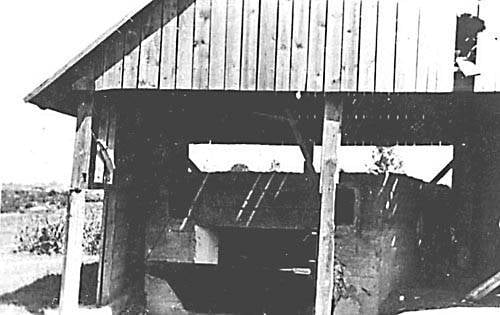
In 1927-37 On the line of the old western state border and in the immediate operational depth, 13 fortifications were built, forming the so-called "Stalin Line".
In the pre-war years, there was a lot of propaganda hype around these fortifications. The fortifications of the old state border were called invincible and compared with the French Line Maginot. I remember the stories of my father, grandfather and many other veterans, who in the first days of the war were absolutely sure that the Germans would definitely stop at the old border line. This belief in the "Stalin Line" was absolute, and therefore when the war easily moved further into the depths of our territory, the people were shocked. Many fighters and ordinary Soviet citizens were worried for a long time by the question: "Why did the Germans so easily overcome invincible fortifications if the Red Army for three months struggled to break through the Mannerheim Line, which was considered weaker?"
And now, ten years after the war, the answer to this question was born from somewhere: disarmed, they say, the old border, transported everything to a new one, and the fortifications blew up. And they all sighed with relief, satisfied with this explanation, as an annoying fly driving away the question and doubt: “Why was it to blow something up?”
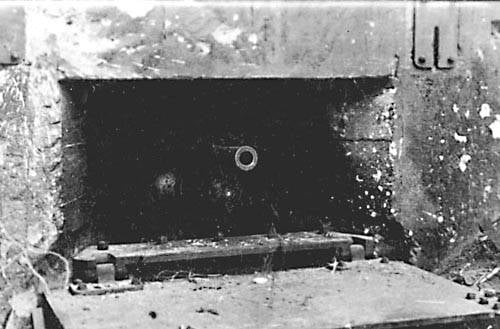
So, the version adopted after the war and retold many times, including in the writings of the so-called “historian” V. Rezun, better known under the pseudonym of Viktor Suvorov, based on the memoirs of General PG Grigorenko (one of the builders of the “Stalin line” ) with colleagues, as well as in numerous publications of open post-war press. Here are excerpts from Comrade Rezun’s “Book of Life”, which brought together all the stories glorifying power and mourning the fate of the invincible fortifications on the old border:
“Each UR is a military unit, equal to the brigade in terms of the number of personnel, but in terms of firepower equal to the corps. Each UR included in its composition a command and headquarters, from two to eight machine gun and artillery battalions, an artillery regiment, several separate batteries of heavy caponier artillery, tank battalion, company or battalion of communications, engineer-sapper battalion and other units. Each UR occupied an area of 100-180 km along the front and 30-50 km in depth ... Each UR could independently conduct combat operations for a long time in isolation. ”
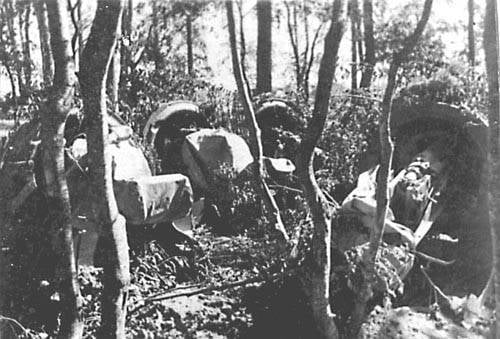
The long-term fire installations (DOS), or long-term firing points (DOT) were the basis of the SD. One of the so-called “standard” DOT of the “Stalin Line” - DOT No. 112 53 of Ura in the Mogilyov-Podolsky district looked, according to all the same authors, as follows: “It was a complex fortification underground structure ... There were warehouses in it weapons, ammunition, food, medical unit, canteen, plumbing (operating, by the way, today), the red corner, observation and command posts. The armament of the dota is a three-amber machine-gun point, in which three Maxims and two cannon half-champions with an 76-mm cannon in each stood on stationary turrets. ” "..." The Stalin Line was not built near the very borders, but deep in Soviet territory. "
"In the autumn of 1939 of the year ... all construction work on the Stalin Line was stopped ... The garrisons of the fortified areas on the Stalin Line were first reduced and then completely disbanded ... And on the eve of the war itself - in the spring of 1941 - powerful explosions all over the 1200-kilometer line of fortifications. Powerful reinforced concrete caponiers ... - tens of thousands of long-term defensive structures were lifted into the air by Stalin’s personal order "(I repeat, all these theses are taken from the" book of life "by V. Rezun" Icebreaker ").
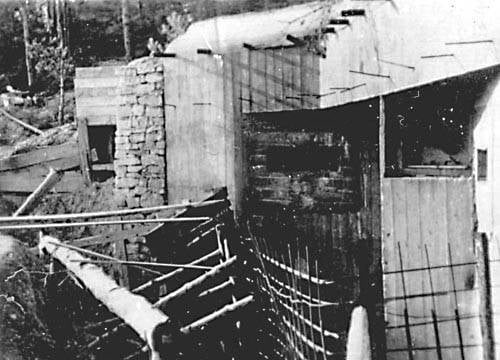
Like this! They built a powerful line of defense for a long time, and then they liquidated it with their own hands. Therefore, they say, the Germans, like a knife through butter, went as far as Moscow itself. This explanation suited everyone and, first of all, our “outstanding” military leaders and “talented” military engineers and builders. And today new “researchers” are clinging to it, trying to offer their own interpretation of this fact.
Like Comrade Rezun, I asked the question “why was the fortifications to be blown up?”, But unlike the latter, I did not search for the answer in the excuses-memoirs of the persons responsible for its construction, and then engage in science fiction. I just tried to find the answer to this question in the archives, access to which, according to other "truth-seekers", is blocked tightly. However, for some reason, they let me into the archives and gave out all those documents of the period 1936-41 that were available on this issue. And here I was surprised to find that the inaccessibility of the “Stalin Line” in the post-war period was, to put it mildly, exaggerated, and no one had ever destroyed any fortifications on the old state border!
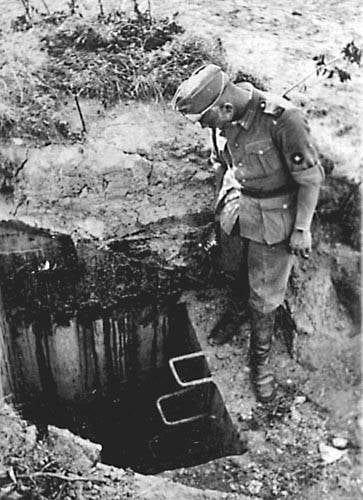 Some facts from the life of the "Stalin Line"
Some facts from the life of the "Stalin Line"Already mentioned, in 1927-37's. on the line of the old Western state border and in the immediate operational depth from it was built 13 fortified areas. However, their characteristics were much weaker than the builders memoirists (General Grigorenko and colleagues) knew about. The length of the front of each UR was on average 80-90 km, although there were some giants who occupied up to 200 km along the front, but none of them extended into 50 km, but only 1-3, to five km. Most of the long-term structures in the UR built 1931-37. were erected from off-grade concrete, often even without steel reinforcement (and in the time of Slalin they stole and attributed). Due to the traditional long-term construction in our country (and especially in those years), some of the long-term constructions automatically passed into the category of "requiring major repairs and reconstruction." It is also interesting that the development and design of the Fortified Areas was carried out by the Main Military Engineering Directorate using the 1909-1913 maps. therefore, during the construction process, excesses have repeatedly occurred, when the interests of the military closely collided with the interests of the national economy, etc. For example, according to the construction plans, one of the pillboxes of the Tiraspol SD should have been erected right in the middle of an irrigation canal dug in 1931 and not taken into account in the plans and maps of the State Institute of Civil Engineering.
Armament 90% built DOT and DOS should be one, at least - two machine guns "Maxim". Only up to 10% of the firing points (more precisely, 9,3%) did the cannons of the design of General Durlyakhov arr. 1904 g. For 76-mm guns arr. 1900 and 1902, but the guns for 1 January 1939 was found only a third of the required quantity and they were withdrawn from long-term storage facilities and were mostly incomplete.
In 1938-39 the services of the People's Commissariat of Defense and the People's Commissariat of Internal Affairs carried out a broad inspection of the fortifications of the old state border, which showed their practical incapacity. Here are excerpts from some of the protocols mentioned inspection:
January 5, 1939
... According to the Special Department of the BVI, the construction of Slutsky SD is very unsatisfactory ... Only 91 was built from the 1938 facility scheduled for construction under the 13 plan ... The work was deployed with considerable delay, as the drawings and plans of the facilities were sent from the Engineering Department with a delay of several months ...
L. Beria "
January 17, 1939
According to the NKVD of Ukraine, the construction of the UR KOVO is in a clearly unsatisfactory state. The construction plan approved by the NPO for 1938 was not fulfilled, as well as the plans of previous years ... 284 ... 2 structures, including 86 DOT and 60 command and observation points from - due to the absence of drawings, not submitted by the KOVO engineering troops department, construction was completely removed ... The drawings of the internal equipment of the buildings sent by the Engineering Department have a number of serious flaws, due to which not only the normal operation of them is disturbed, but and their use ...
In the Shepetovsky UR under construction, the 7, 8 and 9 nodes completely fell out of the construction plan, as a result of which there was an open gate more than 60 km between Shepetovsky and Starokonstantinovsky UR ...
In Novograd-Volynsky UR, in terms of construction, there was no 19 structure approved by the General Staff of the Red Army ... There are no drawings of the internal equipment of many objects ... The planned materials do not meet the needs of construction ...
The practice of concreting structures at a number of objects is carried out contrary to the existing instructions of NGOs ...
In Kamenetz-Podolsk UR, when concreting constructions (in particular No. 53), concrete was not embossed near embrasures, as a result of which the concreting message had to be poured in addition to the empty spaces formed, which significantly reduced the strength of structures ...
In the Ostropolsky SD, the concrete walls turned out to be thinner than the set value on 15 ... Especially many defects were noted in the construction of the Ostropolsky and Kamyanets-Podilsky SD ...
L. Beria "
13 February 1939 city
Despite the long construction and additional equipment of the Pskov and Ostrovsky SD, they cannot be considered combatable at the present time. Due to the inadequately designed and built in-house equipment of most DOTs, they cannot be occupied by troops ... up to half of the structures on the 20-40 cm are filled with water caused by an incorrect assessment of the groundwater depth. At the same time, the water supply system is not working ... There is no electrical equipment in the fortified areas ... In the living rooms of the UR there is high humidity and stale air ...
UR supply centers are not built ... There are no food warehouses ...
Due to illiterate planning of SD, their fire installations cannot fire at a distance of more than 50-100 m, so the terrain has hillocks, ravines and non-cut forests. DOS number 3, is installed on the slope of a ravine and cannot be masked due to permanent landslides, and the gun-half canopy in it is useless, as it is located below the level of the surrounding terrain ... To expand the shelling sectors, you need to remove about 120 cubic meters of land, and also cut down to 000 hectares of forests and bushes ...
The bunker's bunks are designed for the use of Maxim machine guns, but they are equipped with machines of unknown design ... most likely designed for the Hotchkiss machine gun, which had been removed from service for a long time. Cannon polukaponiry are not equipped with armor valves and serve as a source of penetration into the bunker of melt water and precipitation ...
The artillery armament of the UR consists of 6 obsolete 1877 field guns of the year, to which there are no projectiles ...
The territory is not protected by SD. In the course of the work, the commission repeatedly met local residents passing in the immediate vicinity of the firing facilities to shorten the path between the settlements ...
L. Beria "
On the state of KiUR
January 11, 1939
... Kiev fortified area today represents only the skeleton of a pre-local position, consisting mainly of machine-gun structures ... and is completely not provided with the necessary equipment.
Of the 257 facilities located in the area, only 5 are ready for combat ... The left and right flanks are not protected and have easy access for the enemy (the left - 4 km, the right - 7km).
In the center of the zone of the UR ... a bag is formed (a gap in 7 km), through which the free passage of the enemy is opened directly to Kiev.
The front edge of the long-term strip is removed from the center of Kiev only 15 km, which makes it possible for the enemy to shoot at Kiev, without invading a fortified area ...
From 257 facilities, 175 lacks the necessary horizon of shelling due to the terrain (mounds, mountains, large forest and bushes).
Planning work on SD, despite the instructions of the government, is delayed by the implementation of wartime, whereas these works must be carried out immediately. For 3 site alone, you need to remove more than 15 000 cubic meters of land for planning work, which is at least 4 months of work ... In total ... you need to remove at least 300 000 cubic meters of land by fortified areas and cut down to 500 hectares of forest and gustarnika.
... 140 fire installations are equipped with machine guns arr. 1930 g., Which are closed automatically when firing and contribute to the defeat of the fighters from their own machine guns ricocheted bullets.
The special department of KOVO repeatedly informed the command of KOVO about the incapacity of KiUR and the non-taking of measures by the commandant of the KIUR, but despite this, nothing has been done so far ...
Deputy People's Commissar of Internal Affairs of the Ukrainian SSR
B.Kobulov "
About the condition of Mogilyov-Yampolsky Fortified Area
... On the territory of the Mogilev-Yampolsky fortified area, there are 297 fire installations, of which 279 pillboxes and 18 artillery half-supporters ...
The material part of the fire works is in unsatisfactory condition.
On the territory of the 2 sector of defense there are 9 firing artillery half-supporters. Of these, 3 facilities - “The Rock”, “Partizan” and “Mud” do not have filtering equipment ...
In connection with the ongoing conversion of fire installations, artillery polukapirovir in the territory of the UR in the casemates chaos and disorder reign ...
Wiring in many OPK is confused and does not provide their electric lighting at all ...
Semi-Cannon artillery in fire installations is in poor condition.
All guns are assembled from incomplete parts of different guns. Forms on the gun is not available.
The guns located in the 1932 structures were dismantled and cleaned only in 1937, as a result of which the entire material of the guns inside had rust traces.
The spring of the cannon-type guns was mostly assembled incorrectly (instead of the left, the right head spring was set), which, when fired, led to the self-unscrewing of the cylinder head of the compressor and the barrel of the gun after a few shots could go off the installation.
In the two guns, instead of the spun oil, a linseed oil was put in, clogging the hole in the oil pipe, which could have caused the compressor cylinder to rupture ...
UR is still not staffed ... middle command personnel.
Commanders assigned from remote places and cities (Saratov, Moscow, Leningrad) will be able to arrive in the UR only after 5-6 days, after the announcement of mobilization ...
Under the existing states of the rank and file, the pulbates will not be able to perform the tasks assigned to them, since the company has a 21 machine gunner in the company, and the company must service the 50 structures ...
Arms of gunners are not provided with bullets at all ... In the presence of artillery, bullets at the states have absolutely no artillery masters who could conduct technical supervision over caponier artillery ...
Deputy People's Commissar of Internal Affairs of the Ukrainian SSR
Kobulov "
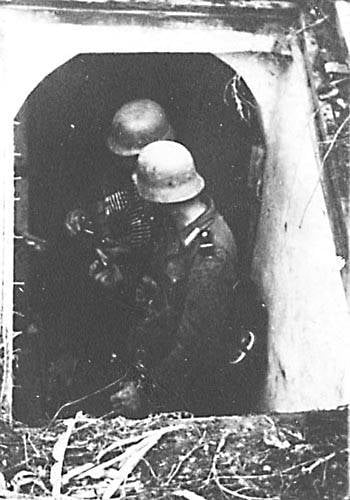 Such reports and minutes were compiled at the end of 1938 - the beginning of 1939. great variety. Not only the NKVD, but also representatives of the infantry and artillery units of the Red Army, which were to form the basis of the SD garrisons, considered these structures unsuitable for conducting any kind of battles (and especially offensive). Therefore, soon the General Staff of the Red Army and the Military Engineering Directorate developed a set of measures to eliminate the deficiencies noted and to pre-equip the fortifications at the old state border.
Such reports and minutes were compiled at the end of 1938 - the beginning of 1939. great variety. Not only the NKVD, but also representatives of the infantry and artillery units of the Red Army, which were to form the basis of the SD garrisons, considered these structures unsuitable for conducting any kind of battles (and especially offensive). Therefore, soon the General Staff of the Red Army and the Military Engineering Directorate developed a set of measures to eliminate the deficiencies noted and to pre-equip the fortifications at the old state border. First, to eliminate the gaps in the defense structure, it was decided to build additional 8 fortified areas, the structure of which was better adapted to the terrain than the previous ones. The proportion of artillery caponiers in them was already 22-30%, and it was planned to install more modern weapons in them - L-17. But there were no guns to equip the caponiers, since the Kirov Plant had frustrated the L-17 gun production program. Secondly, it was prescribed to urgently form new UR headquarters and additional machine gun and artillery units, which were to form the backbone of their garrisons.
Repeated inspection of the old border of the UR was held in April-May of 1941 by representatives of the General Staff, the People's Commissariat of Defense and the Central Committee of the CPSU (b). She particularly identified the following:
“1. The planned measures for the completion and modernization of the fortifications of the old state border have not yet been carried out due to the need to complete construction works on the fortifications of the new state border by 1 July, but will continue after the deadline ...
2. At present, the garrisons of SD are not provided with personnel. The average number of the garrison is currently no more than 30% of the regular (really 13-20%) and cannot be increased due to the lack of housing and rear support ... The regular number of bullets also does not correspond to the defenses of the fortifications, as it can partially cover no more than 60% fire installations.
3. Despite the fact that to strengthen the weapons of the UR in 1938-40. a large number of artillery weapons were placed at their disposal, most of them being outdated light field guns arr. 1877-1895 without special machines and ammunition. Of the relatively modern artillery weapons, only 26 76-mm guns were handed over to the SD garrisons. 1902 g. And 8 76-mm field guns arr. 1902 / 30 d. From the 200 L-17 caponier guns ordered were not received completely ...
The installed capon guns are incompletely equipped ... The state of the mechanisms is such that ... it is impossible to fire at them, and often it is dangerous for the calculation. These tools have no formulary ... Spare parts and equipment kits have been lost ... There is no proper care for the implements ...
4. Small guns DOT half make up machine guns outdated design and foreign brands, which are often lacking ammunition.
5. Tank battalions and tank companies of support for UR exist only in reports, as they have outdated hardware of the 1929-33 release. with a fully developed resource, they do not have machine-gun armaments and can only be limitedly used as fixed firing points. Fuel for tank mouths is nowhere to be found.
6. Despite repeated instructions on the need to construct hiding gun and machine-gun turrets ... for which more than 300 T-18 and T-26 tanks were transferred to engineering management, not a single installation is currently available, and tank towers are installed on tank corps buried in the ground, sometimes additionally casually concreted. Life support systems in such armored installations are absent ... "
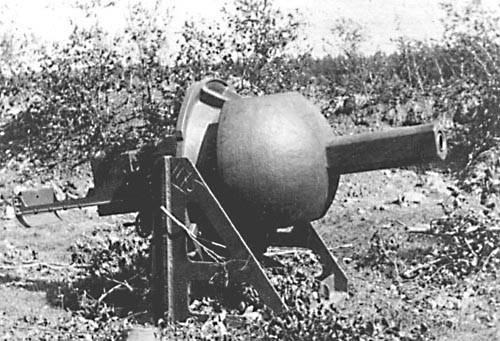
The new list of shortcomings was almost identical to the one made at the beginning of 1939, and again the Commissariat of Defense once again made the right conclusions. 25 May 1941 issued another commemorative government decree (since 1932 was the tenth in a row!) On measures to strengthen the fortifications at the old and new state borders. On the old border, the deadline for the implementation of measures was set on 1 in October on 1941, but before the war, nothing was done - all forces were sent to complete the construction of new SD on the Molotov line.
The last of the documents found to reinforce the fortifications of the old state border dates back to 11 June 1941. According to the document, the Letichevsky SD was shipped from the warehouses of the NK Arthur Office: the Maxim machine guns on the Sokolov machine — 4 pcs; machine guns "Vikkers" on a tripod - 2 pcs; Colt heavy machine guns - 6; 37-mm battalion guns of Rosenberg on an iron gun carriage - 4 units, 45-mm tank guns arr. 1932, without towers - 13; fragmentation artillery rounds caliber 45-mm - 320; shrapnel artillery rounds caliber 76,2-mm - 800; 7,62 rifle cartridges - 27 000. As can be seen, the practice of using SD by the Red Army, as warehouses of obsolete junk, was no different from the practice of similar use of fortresses by the Russian army at the beginning of the century and the modern SD — at the end. And no government decrees could change this situation.
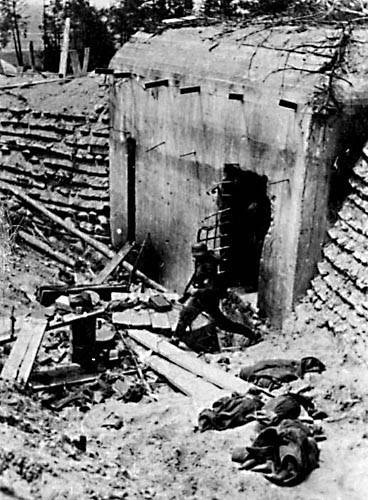 So, fortifications of the old state border, until the very beginning of the war, were waiting in the wings to once again undergo modernization. This, incidentally, is also shown by G.K. Zhukov in his “Memories and Reflections”:
So, fortifications of the old state border, until the very beginning of the war, were waiting in the wings to once again undergo modernization. This, incidentally, is also shown by G.K. Zhukov in his “Memories and Reflections”: “URs on the old state border were not liquidated and disarmed, as it is said in some memoirs and historical developments. They were retained in all the most important sectors and directions, and it was intended to further strengthen them. But the course of hostilities at the beginning of the war did not allow to fully implement the planned measures and properly use the old fortified areas ... "
Zhukov was careful in his words - Ury were saved and were not used only because of the unforeseen "course of the fighting."
There is another interesting testimony made this time by one of the enemies. 17 July 1941 was a German sapper, Lieutenant Bem, captured during the battles of Orsha at the headquarters of the 20 Army. The interrogation of the prisoner lasted more than an hour and there is no need to give his transcript in full. But in the course of other useful (and not very) information, he told something about the fortifications of our old state border.
"... Our company had the task of blocking concrete fortifications on the line of the old border of Soviet Russia and their demolition ... We had very good training and were preparing to act as part of the mobile groups with tank forces ... But we could not fulfill our task, so instead of powerful lines of fortifications that we expected to meet ... we found only scattered abandoned concrete structures, in some places unfinished ... Those firing points that met us with machine-gun fire were easily avoided using uneven terrain ... M We could not believe for a long time that this is the most inaccessible "line of the old border ..."
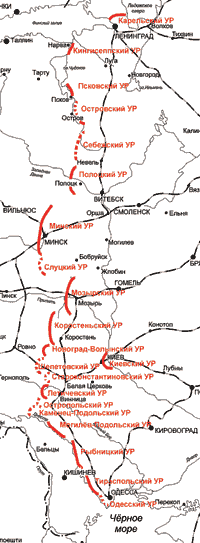 However, even in the presence of major shortcomings in the firing installations of the UR, their planning and equipment, being occupied by field troops, they inongda offered some resistance to the German troops. So it was Karelian SD (one of the representatives of the earliest construction), occupied by the troops of the 23 Army, restrained the offensive of the Finnish troops and blocked their way to Leningrad. It was the Karelian SD that was the core of the defense of Leningrad from the north to 1944.
However, even in the presence of major shortcomings in the firing installations of the UR, their planning and equipment, being occupied by field troops, they inongda offered some resistance to the German troops. So it was Karelian SD (one of the representatives of the earliest construction), occupied by the troops of the 23 Army, restrained the offensive of the Finnish troops and blocked their way to Leningrad. It was the Karelian SD that was the core of the defense of Leningrad from the north to 1944. Kingisep's UR lasted for two weeks, occupied by units of the 41 and 191 rifle divisions, but the fortifications did not withstand the bombing and were useless against tanks.
The Ostropolsky and Letichevsky SD fought a little more than 10 days, although in this case, in addition to infantry filling 8 and 13 ck, as well as 173 sd, they were reinforced by an artillery brigade and some units of the 24-th mechanized corps. These areas could hold on longer, but were surrounded and were abandoned.
Resisted the Romanians and Mogilev-Yampolsky SD, the structures of which were occupied 130-th sd. However, since the location of the UR initially did not include any stocks of ammunition and food, and also due to the threat of bypassing it from the flanks, the fortified area was left by troops, and by the time of leaving a number of fortifications were already silenced.
Thus, the bike of the allegedly built in 1928-1939. in the USSR, the indestructible "Stalin Line", which was then blown up according to the stupid (or, on the contrary, super-intelligent) order of the "leader of all nations" before the war, which, they say, was one of the reasons for the rapid retreat of the Red Army, was decided from beginning to end. And the authors of this story (which appeared, by the way, after 1955 with the highest blessing of N. Khrushchev), are many of those who built this line. And the authors eagerly supported those who showed their “strategic art” in the summer of 1941.
- Mikhail Svirin
- http://tank.uw.ru"rel =" nofollow ">http://tank.uw.ru
Information